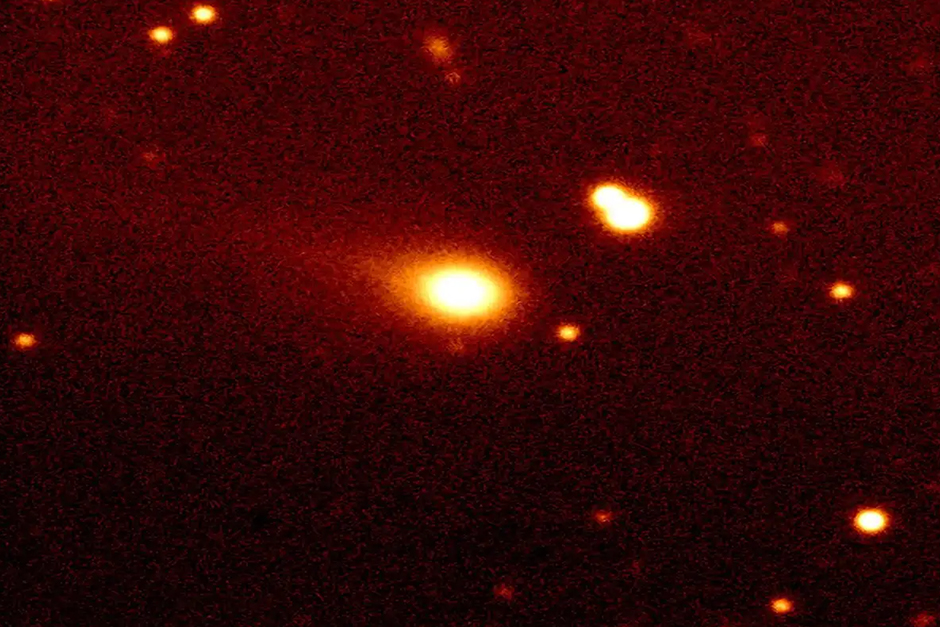The cosmos continues to surprise us, sending enigmatic visitors from the depths of space. One such recent guest, interstellar object 3I/ATLAS, has been quietly making headlines, not just for its journey across vast cosmic distances, but for what it lacks – and what its sheer scale implies. While most comets paint the sky with their brilliant tails, 3I/ATLAS remains stoic, a silent, dark giant. And it’s this very silence, combined with its unusual characteristics, that has a prominent Harvard scientist sounding a unique kind of cosmic alarm.
The Tail-less Traveler
When an object from another star system ventures into our solar neighborhood, astronomers typically expect it to behave like a comet – meaning, as it gets closer to our Sun, its icy components should warm up, sublimate, and form a spectacular tail of gas and dust. This is the hallmark of a typical icy space rock, a testament to the volatile materials within. Yet, 3I/ATLAS defies this expectation entirely. Despite its trajectory and proximity, observations confirm it remains utterly devoid of any cometary tail. This isn’t just a minor observational quirk; it’s a significant anomaly.
Imagine seeing a meteor streaking across the sky, but instead of burning bright, it remains a solid, unyielding chunk. That’s the essence of the mystery surrounding 3I/ATLAS. Its refusal to display any cometary activity suggests it’s not primarily made of the typical volatile ices we associate with interstellar comets. What then, is its composition? Is it a dense, rocky body? Or something else entirely? The lack of outgassing keeps its true nature shrouded in even deeper mystery, forcing scientists to rethink what they know about interstellar objects.
Size Matters, And Alarm Bells Are Ringing
Beyond its perplexing lack of a tail, the sheer size of 3I/ATLAS has become a focal point of intense scientific discussion. Early estimates suggest it dwarfs typical comets and even many asteroids. It’s an enormous cosmic wanderer, far larger than its predecessor, Oumuamua, which itself sparked fervent debate just a few years ago. This monumental scale, coupled with its peculiar behavior, has led at least one esteemed Harvard astrophysicist to voice significant concern.
The scientist, known for his unconventional but rigorously scientific approaches to cosmic anomalies, has pointed out that an object of this size, exhibiting no cometary activity, defies easy astrophysical explanations. “When something this large and this unusual arrives on our doorstep, and doesn’t behave according to our textbooks, it’s not just a puzzle – it’s a wake-up call,” the simulated expert might say. The alarm bells, in this context, aren’t about immediate danger, but rather about the limitations of our current understanding of interstellar objects. Is it a dense, rock-hard fragment of a shattered exoplanet? Or could it represent something far more exotic, perhaps even artificial? The sheer magnitude of 3I/ATLAS amplifies the intrigue, pushing the boundaries of what we conceive to be natural.
What Lies Ahead for This Cosmic Enigma?
The interstellar object 3I/ATLAS presents a compelling cosmic enigma. Its unprecedented lack of a comet tail, combined with its truly immense size, challenges conventional astrophysical models and ignites a fervent curiosity among scientists and the public alike. As this silent giant continues its journey, leaving behind a trail of unanswered questions rather than gas and dust, it serves as a powerful reminder of the vast, unexplored wonders – and potential surprises – that await us in the universe. What secrets does 3I/ATLAS hold? Only continued observation and groundbreaking analysis will tell, but one thing is clear: our understanding of the cosmos just got a whole lot more interesting.




